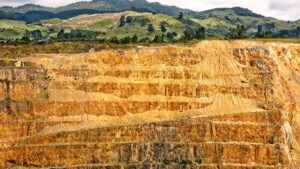Tim Treadgold: Nickel Mines carves out a slice of the Indonesian nickel business

Pic: Schroptschop / E+ via Getty Images
If you can’t beat them, join them! While not the official motto of Sydney-based Nickel Mines it could be because of the way it is becoming an integral part of the booming Indonesian nickel industry – without many Australian investors recognising the value being created.
Since listing six months ago Nickel Mines (ASX:NIC) has been a stodgy performer, fading from a peak of 36c shortly after floating to around 28c today.
That’s less than half the 65c value put on the stock by analysts at the stockbroking firm of Bell Potter, which has it as a speculative buy.
That low, low prices
One of the problems dogging Nickel Mines is that the second half of last year saw the price of nickel, which is mainly used in making stainless steel, fall sharply from more than $US6 a pound to less than $US5/lb.
Uncertainty about the outlook for stainless steel, partly because of the China v US trade war, has kept investors away from the nickel sector even as a price recovery has kicked in with the current price of $US5.33/lb reflecting a fall in nickel stockpiles.
The low price is a problem for all participants in the nickel industry, though perhaps less so for Nickel Mines which Bell Potter reckons will be producing nickel at an all-in sustaining cost of between $US3.63-and-$US3.86/lb.
If you can’t beat them…
The key to understanding Nickel Mines is that it is not like better-known Australian nickel miners largely because it has built a business in a country long-regarded as a rival to Australia’s sometimes troubled nickel industry.
The Indonesian nickel business has succeeded because it is focussed on low-grade but easy to mine near-surface ore. Most Australian nickel comes from deep mining of higher-grade ore in hard rock.
Controversial in its early years, the Indonesian material was exported in an unprocessed form, virtually as mud, causing problems for shippers because of the potential for the ore to liquefy at sea, as well as creating a waste problem in China, and environmental problems in Indonesia.
- Subscribe to our daily newsletter
- Bookmark this link for small cap news
- Join our small cap Facebook group
- Follow us on Facebook or Twitter
Known by the unattractive name of Nickel Pig Iron (NPI) the “mud” was processed in Chinese furnaces to extract the metal at a cost which undercut Australian producers and turned Indonesia into the world’s biggest nickel producer.
No-one liked the NPI industry in its original form, especially the government of Indonesia which has introduced laws requiring extensive processing of nickel ore to add local value and create local jobs.
Next-gen nickel
Nickel Mines is very much part of this new wave sweeping across the Indonesian nickel business, investing in ore processing technology known as rotary kiln electric furnaces (RKEF) as well as teaming up with China’s biggest stainless-steel maker, Tsingshan.
From being a business facing an uncertain future as a simple NPI miner, Nickel Mines today has a number of emerging product streams, as a producer of high-grade (saprolite) ore for Tsingshan’s Indonesian operations, and part-owner of two RKEF facilities able to produce 15,000 tonnes of nickel a year.
Construction of the RKEF plant is scheduled for completion in June, but the company is confident that commissioning will start before then.
Notice us!
Bell Potter said that Nickel Mines has added value since listing through a number of transactions but received little recognition from investors.
“With the nickel price recovering and excellent progress being made towards commencing production, we believe it is timely to highlight the value disconnect that has emerged,” Bell Potter said in a note to clients last week.
Investing in Indonesia can be a tricky business, as some Australian mining companies have discovered over the past 20 years, and with Nickel Mines there is also risk associated with a mineral processing venture still under construction.
“Nickel Mines first two RKEF lines are scheduled for first production in the June quarter and to reach 80 per cent of nameplate capacity within six-to-eight weeks of that,” Bell Potter said.
A tax-holiday granted by the Indonesian Government as part of its push for more domestic mineral processing will boost the financial performance of Nickel Mines which Bell Potter reckons will be generating strong profits from next financial year.
Revenue in the 2020 year is forecast by the broker to reach $US191 million with $US86.5 million remaining as earnings before tax and other charges.
A number of catalysts could trigger fresh interest in Nickel Mines, including updates on construction of the RKEF lines, the December quarter report due soon, and commissioning of the first processing plant towards the end of June.
UNLOCK INSIGHTS
Discover the untold stories of emerging ASX stocks.
Daily news and expert analysis, it's free to subscribe.
By proceeding, you confirm you understand that we handle personal information in accordance with our Privacy Policy.








